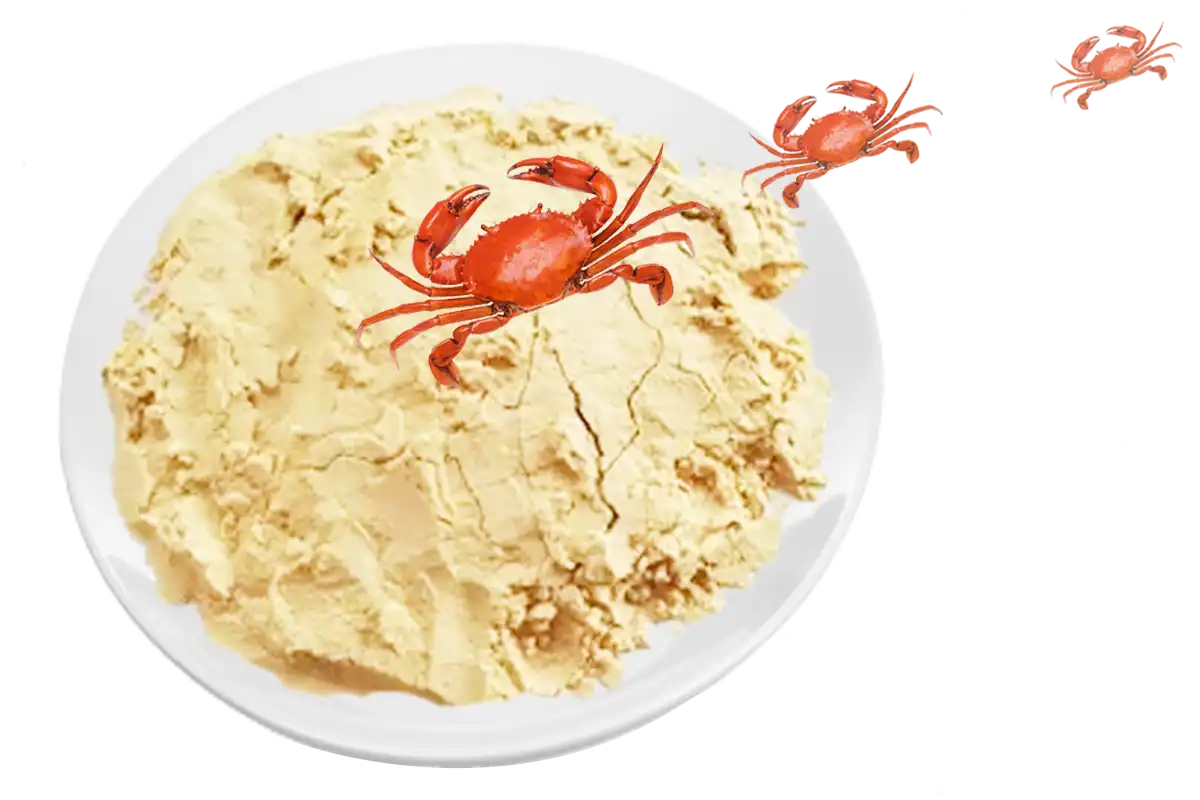
A little crab
is enough to change the world

is enough to change the world
Chitin, which is widely found in shrimp and crab shells, is a polysaccharide made by the polymerization of N acetyl glucosamine.
Chitin is deacetylated to obtain chitosan.
In the past ten years, the research on chitin and chitosan has been widely carried out at home and abroad, and their functions in anti-tumor and prevention and treatment of pathogenic microorganisms have attracted more and more attention. However, due to its insoluble water, it is very limited in the development of applications. To this end, chitosan is degraded into Chito-oligosaccharides (also known as oligosaccharides, chitosan oligosaccharides, chitosan oligosaccharides) by appropriate methods, that is, oligosaccharides composed of 2~10 aminoglycoses linked by β-1-4 glycosidic bonds.
Through a series of experiments, it has been found that it not only has good water solubility, is easy to be absorbed by the human body, but also has a variety of physiological functions such as antibacterial, anti-tumor, blood lipid regulation, immune regulation and activation of intestinal bifidobacteria, and the application field has been greatly broadened.
Chito-oligosaccharides has a unique application value in fine chemicals, biomedicine, health food, agriculture, forestry and animal husbandry.

Chito-oligosaccharides chemical structure

2.1 Biological activity. Chito-oligosaccharides has a water solubility of more than 99% and a human absorption rate of 99.88%, which has superior biological activity than chitosan. It can improve the flora distribution of intestinal microbes, stimulate the growth of beneficial bacteria, and its pharmacological activity is 14 times that of chitosan of the same weight. Experiments have shown that Chito-oligosaccharides can proliferate Bifidobacterium by 120 times when applied to dairy products.
2. 2 Antibacterial and antibacterial effect. Chito-oligosaccharides has a pronounced antibacterial and antibacterial effect. Its antibacterial effect is also gradually enhanced with the decrease of the molecular weight of Chito-oligosaccharides, with a molecular weight of 1 814, the degree of deacetylation of 84% Chito-oligosaccharides treated non-woven fabrics, it was found that the concentration of 0.01% against Proteus vulgaris reached 90%, while for Staphylococcus aureus and Escherichia coli, 0.05%, the molecular weight is 2 000~ 30 000, and the degree of deacetylation is 91.5% Chito-oligosaccharides inactivates two oral pathogens, Actinobacillus actinobacillus and Streptococcus mutans.
2. 3 Anti-tumor effects. Chito-oligosaccharides can improve the body's immune activity and anti-cancer ability, and has a significant inhibitory effect on liver cancer cells.
2. 4 Disease prevention and disease resistance of plants. Chito-oligosaccharides also acts as a plant regulator to enhance the plant's defenses against pests and diseases. Oligosaccharides have the functions of regulating plant growth, development, reproduction, disease prevention and resistance, etc., can stimulate the immune system response of plants, activate defense responses, produce active substances with disease resistance, and inhibit the formation of diseases.
Chitosan is derived from marine crab shells and has a variety of benefits and functions in Wound care. Here's the breakdown:
Chitosan benefits for Wound care
Biocompatibility and biodegradability: Chitosan is highly biocompatible and biodegradable, making it an excellent material for medical applications, especially wound care. It can be used in dressings without causing a pronounced immune response and breaks down naturally in the body.
Antimicrobial properties: Chitosan has natural antimicrobial properties that help prevent wound infections. This is especially useful when treating open wounds, which have a high risk of bacterial and fungal infections.
Promote hemostasis: Chitosan is effective in promoting hemostasis (hemostasis). This makes chitosan-based dressings ideal for the management of acute wound bleeding, resulting in a shorter overall wound healing time.
Promotes healing: Chitosan promotes the healing process by enhancing granulation tissue formation and collagen synthesis. This allows for faster and more efficient wound closure.
Functions of Chito-oligosaccharides in Wound care
Wound dressing material: Chitosan can be processed into various forms, such as gels, films, and foams, to be used as dressing materials. These dressings are designed to maintain a moist environment around the wound, which facilitates healing and helps reduce pain.
Drug delivery media: Chitosan's bioadhesive properties make it an excellent drug delivery medium. In Wound care, chitosan dressings can be impregnated with antimicrobials or other drugs that promote wound healing to provide targeted therapy directly at the wound site.
Barrier formation: Chitosan forms a semi-permeable barrier over the wound, protecting the wound from external contaminants while still allowing the wound to breathe. This barrier supports a natural wound healing environment, reducing the risk of infection and promoting faster healing.
Hygroscopicity: Chitosan has excellent hygroscopic properties. This is important in Wound care as it helps to absorb excess wound exudate that would otherwise hinder the healing process and promote infection.
Structural support for tissue engineering: In more advanced applications, chitosan can be used as a scaffold material in tissue engineering. Its structural properties help support the growth of new tissues, making it suitable for regenerative medicine applications related to wound healing.
In conclusion, Chito-oligosaccharides has a unique combination of benefits and features that make it a perfect fit for Wound care application. It promotes healing and prevents infection, while being biocompatible and biodegradable, which fits well with the need for effective wound management.
The service has a warm connection with the customer